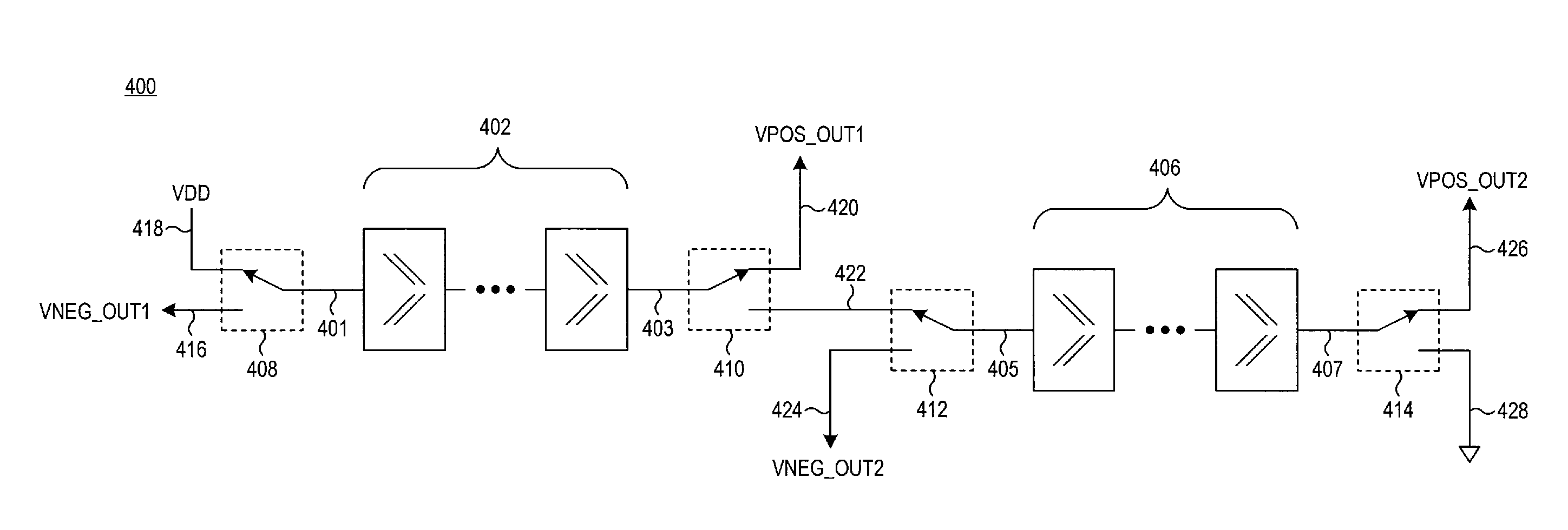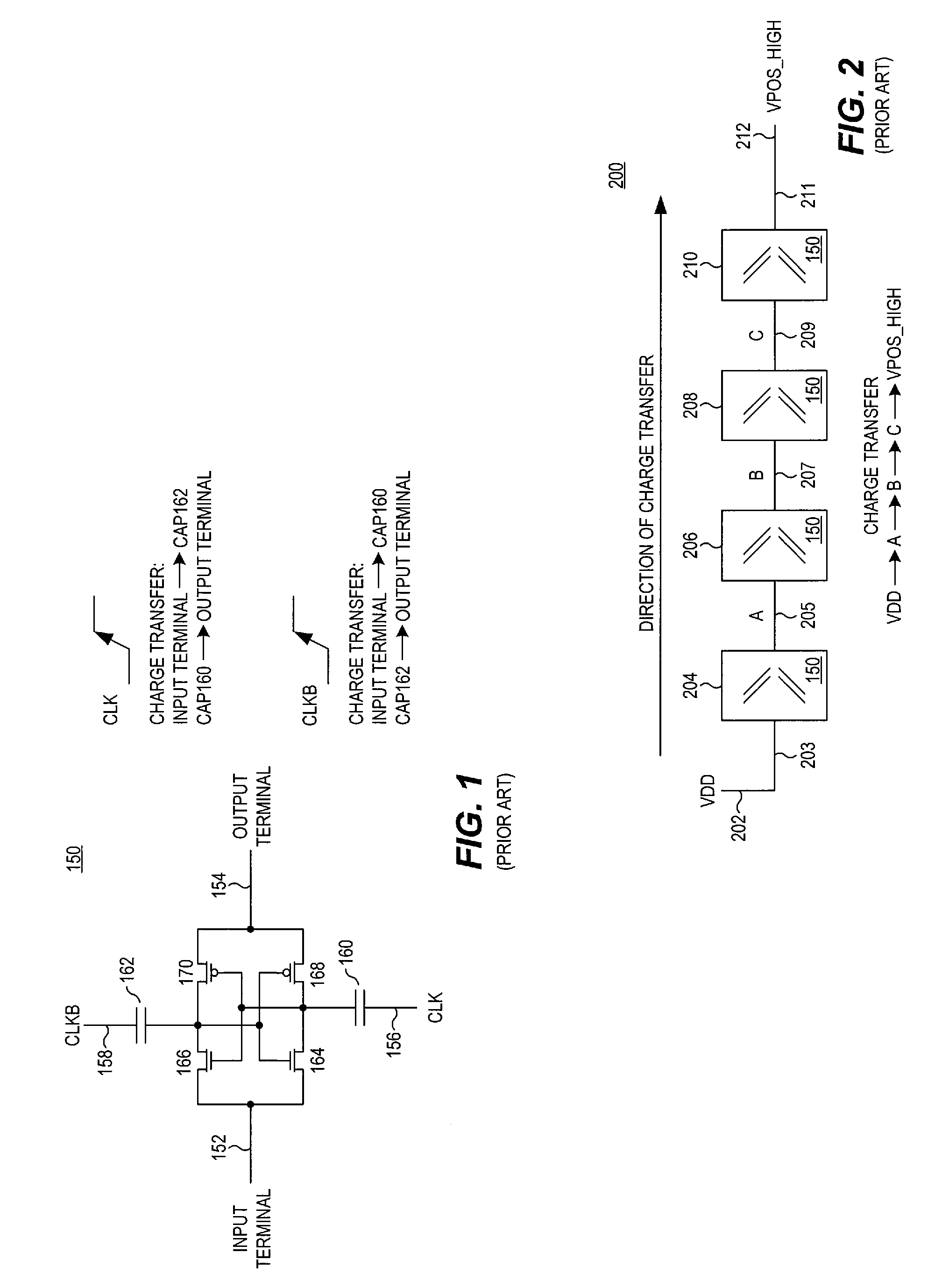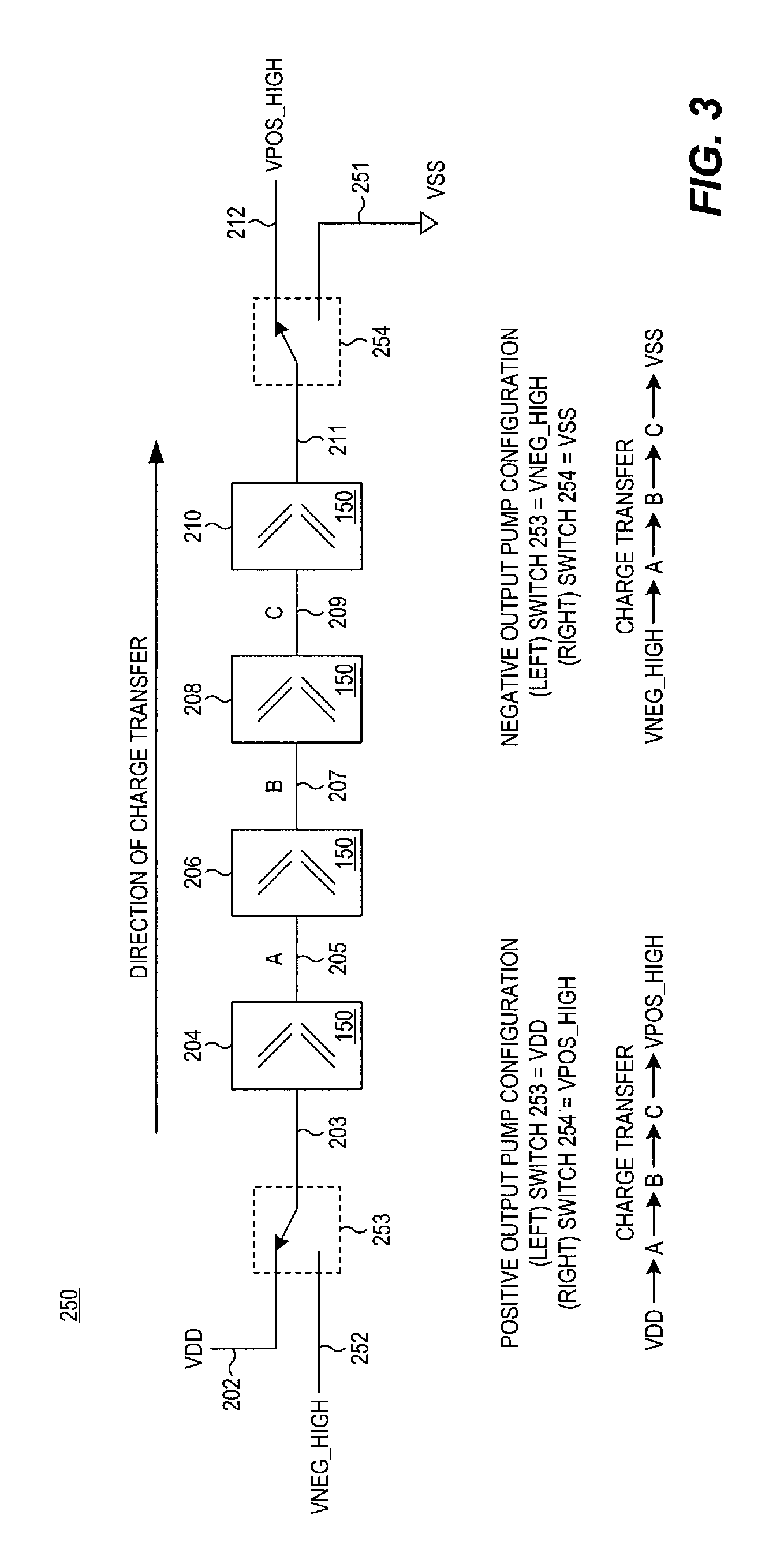Method for using a multiple polarity reversible charge pump circuit
a charge pump and multiple polarity technology, applied in the field of capacitor voltage multiplier circuits, can solve the problems of increasing the current that must be supplied by the user, requiring significant amount of semiconductor real estate for their implementation, and requiring significant amount of power supply by the user, and achieves large current and high leakage current.
- Summary
- Abstract
- Description
- Claims
- Application Information
AI Technical Summary
Benefits of technology
Problems solved by technology
Method used
Image
Examples
Embodiment Construction
)
[0033]Referring now to FIG. 1, an exemplary directional charge pump stage 150 is depicted. Such a charge pump stage 150 is frequently incorporated as one of a plurality of series-coupled charge pump stages within a charge pump circuit.
[0034]The charge pump stage 150 is clocked by two complementary clocks CLK (also labeled 156) and CLKB (also labeled 158), and charge is always transferred from the input terminal 152 to the output terminal 154 (i.e., here shown as left to right). On a rising edge of the CLK signal, and during the time that CLK remains high, charge transfers from the input terminal 152 (i.e., “input node”), through NMOS transistor 166, to capacitor 162. During the same rising edge of the CLK signal, charge also transfers from capacitor 160, through PMOS transistor 168, to the output terminal 154.
[0035]On a rising edge of the CLKB signal, and during the time that CLKB remains high, charge transfers from the input terminal 152, through NMOS transistor 164, to capacitor ...
PUM
 Login to View More
Login to View More Abstract
Description
Claims
Application Information
 Login to View More
Login to View More - R&D
- Intellectual Property
- Life Sciences
- Materials
- Tech Scout
- Unparalleled Data Quality
- Higher Quality Content
- 60% Fewer Hallucinations
Browse by: Latest US Patents, China's latest patents, Technical Efficacy Thesaurus, Application Domain, Technology Topic, Popular Technical Reports.
© 2025 PatSnap. All rights reserved.Legal|Privacy policy|Modern Slavery Act Transparency Statement|Sitemap|About US| Contact US: help@patsnap.com



